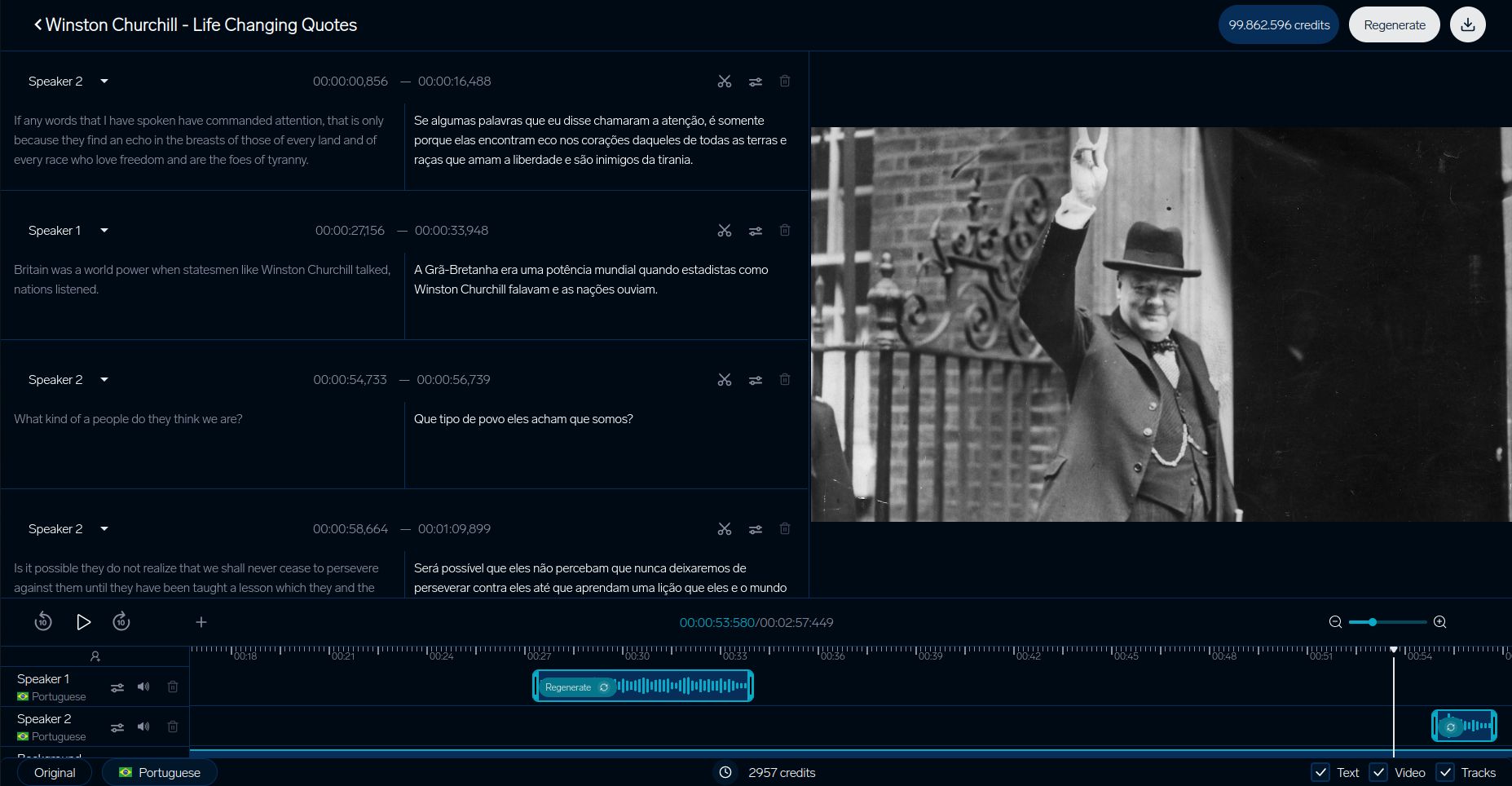AI Dubbing for Large Projects: Challenges and Solutions
AI dubbing is transforming how multilingual content is created, offering faster turnaround times, lower costs, and consistent quality. But scaling this technology for large projects brings technical and logistical challenges.
Key Takeaways:
- Benefits: 75% faster turnaround, 50% cost reduction, and uniform voice quality compared to traditional dubbing.
- Challenges: High computing demands, maintaining voice consistency, and ensuring emotional depth across languages.
-
Solutions:
- Use GPU computing and cloud platforms for scalability.
- Combine AI automation with human oversight for quality control.
- Leverage tools like voice cloning and workflow automation to streamline processes.
Quick Comparison
| Aspect | Traditional Dubbing | AI Dubbing |
|---|---|---|
| Time Efficiency | Weeks to months | 75% faster turnaround |
| Cost Impact | High | 50% cost reduction |
| Quality Consistency | Variable | Uniform output |
| Resource Needs | Studio + voice actors | Computing infrastructure |
AI dubbing is already making strides in film, e-learning, and gaming, with further advancements expected in emotional expression and cultural accuracy. Read on to discover how this technology is reshaping content creation.
Managing High-Volume Content Processing
Handling large-scale AI dubbing requires significant computing power and a strong infrastructure. Advanced technologies play a key role in meeting these demands. Let’s explore the hardware and system requirements necessary for scaling dubbing operations effectively.
Computing Resource Requirements
AI dubbing at scale involves processing multiple audio streams at the same time. Here’s a breakdown of the essential resources:
| Resource Type | Purpose | Impact on Processing |
|---|---|---|
| GPU Computing | Voice synthesis and training | Speeds up processing by 5-10x with newer GPUs |
| Storage Systems | Managing audio/video files | Supports parallel processing |
| Memory Allocation | Real-time processing | Reduces delays in voice generation |
| Network Bandwidth | Content distribution | Handles multiple dubbing streams simultaneously |
"For underlying GPU compute, we can't imagine running our training and inference workloads anywhere else. We see 5-10x training workload speedups out-of-the-box whenever we move to a newer NVIDIA architecture family." - James Leoni, Head of Machine Learning at Papercup
Cloud Computing Solutions
Cloud platforms offer a flexible alternative to dedicated hardware, making them a game-changer for large-scale AI dubbing. These platforms allow companies to scale operations and control costs efficiently.
Take the Insider-Papercup partnership as an example:
- Rapid Market Expansion: A Spanish YouTube channel reached 100 million views within weeks by leveraging a cloud-based AI dubbing solution.
- Improved Performance: Using a cloud-based Triton Inference Server enhanced voice synthesis and reduced delays.
Key benefits of cloud infrastructure include:
- Scalability: Resources automatically adjust to project needs.
- Distributed Processing: Tasks are spread across multiple virtual machines.
- Cost Efficiency: Pay-as-you-go pricing helps manage expenses during peak usage.
- Global Accessibility: Teams can collaborate from anywhere in the world.
With these solutions, companies have seen dramatic improvements, cutting project turnaround times by 75% and reducing costs by 50%. Cloud infrastructure addresses both technical and logistical hurdles, making it a vital tool for large-scale AI dubbing.
Quality Control in Large Projects
Scaling technical processes is only part of the challenge in large-scale AI dubbing. Ensuring consistent voice quality is equally critical. Modern AI dubbing platforms prioritize quality by combining advanced technology with human oversight to deliver reliable results.
Voice and Brand Alignment
Maintaining uniformity across projects requires sophisticated tools and strategies. AI dubbing platforms rely on advanced speech recognition and synthesis to address common challenges:
| Quality Factor | Challenge | Solution |
|---|---|---|
| Voice Consistency | Keeping tone uniform across languages | AI tools to control pitch and style |
| Cultural Fit | Respecting regional nuances | Human experts ensure cultural accuracy |
| Brand Safety | Aligning with brand identity | AI-human collaboration for quality control |
| Accent Control | Managing regional dialect variations | Fine-tuned AI adjustments for precision |
Deepdub’s hybrid approach (combining AI and human expertise) has resulted in over 70% viewer satisfaction.
"You're part of the dubbing industry. You understand the dubbing industry. And you're using AI to enhance what's already there that's important."
– Paul Robinson, President at Kartoon Channel
While aligning with brand and cultural expectations is crucial, voice cloning takes character consistency to the next level.
Voice Cloning Technology
Voice cloning plays a key role in maintaining character consistency in large dubbing projects. This technology analyzes original speech patterns, reproduces unique vocal traits, and continuously improves through learning algorithms. To ensure quality, human experts conduct reviews and perform regular checks to preserve emotional depth and authenticity.
Project Management for AI Dubbing
Handling large-scale AI dubbing projects involves juggling multiple processes. Modern approaches combine AI-powered automation with human oversight to ensure efficiency and maintain high standards. This section focuses on practical project management techniques, building on earlier discussions about quality and scalability challenges.
Managing Multi-Step Processes
AI dubbing projects follow a structured series of steps that need precise coordination. For example, Papercup's workflow processes 100 minutes of video per week, covering tasks like translation, adaptation, recording, and mixing - while reducing costs by 80%.
| Process Stage | Actions | Quality Checks |
|---|---|---|
| Initial Setup | Transcription with timecodes | Speaker assignment verification |
| Translation | Adjusting text length (1-1.2X) | Context and cultural reviews |
| Audio Processing | Speed tweaks, gap filling | Waveform alignment checks |
| Final Production | Combining dialogues | Ensuring smooth transitions |
Timing is critical for natural-sounding results. Translated text should stay within 1-1.2X of the original length to keep pacing consistent. Speed adjustments and strategic dialogue combinations can help resolve timing issues without sacrificing quality.
Leveraging Workflow Automation Tools
Beyond process management, automation tools play a big role in streamlining operations. With the market for automated dubbing services projected to hit $189.80 million by 2030, there's growing demand for faster and more cost-efficient solutions.
Key features of modern automation platforms include:
- Automated Task Distribution: Assigns tasks based on team capacity and expertise.
- Progress Tracking: Monitors milestones and deadlines in real time.
- Integrated Quality Control: Ensures technical and linguistic accuracy.
- Version Control: Manages content iterations and approvals systematically.
These tools significantly improve efficiency. For instance, Deepdub reports cutting turnaround times by 75% and costs by 50% using automated workflows.
When selecting platforms, project managers should prioritize tools that handle speed, pitch, and intonation adjustments while supporting the required language pairs. The goal is to scale operations smoothly without sacrificing quality or creating delays.
sbb-itb-f4517a0
Error Detection and Quality Checks
This section dives into strategies for identifying and fixing errors in large-scale projects, building on earlier quality control approaches.
Finding Errors in Large Projects
Handling quality control in large AI dubbing projects requires a clear, organized approach to error detection.
| Error Type | Detection Method | Impact Level |
|---|---|---|
| Cultural Nuance Issues | Expert Review | High |
| Voice Inconsistencies | Automated Waveform Analysis | Medium |
| Lip Sync Problems | Frame-by-Frame Check | High |
| Audio Gaps | Automated Timeline Analysis | Medium |
| Translation Errors | Linguistic Review | Critical |
Interestingly, only 7.04% of viewers currently prefer dubbed content over subtitles, highlighting significant room for improvement in quality.
Some critical areas that need close attention include:
- Speech Clarity: Ensuring every segment has consistent audio quality.
- Emotional Resonance: Catching mismatches in tone or emotional delivery.
- Specialized Vocabulary: Spotting errors in technical or industry-specific terms.
- Brand Safety: Checking for potentially harmful or inappropriate content.
AI-Based Quality Control
To tackle these issues, modern systems combine AI automation with human expertise for a balanced approach.
AI tools are used to detect problems like audio sync errors, volume mismatches, and dialogue gaps. These systems flag potential issues for human review, ensuring nothing critical slips through. Additionally, linguistic tools identify mistranslations, incorrect gender usage, and cultural insensitivities. Advanced AI even analyzes voice tone, pitch, and emotion to maintain consistency.
For the best results, human review is essential for:
- High-profile marketing campaigns
- Educational content for customers
- Compliance-related materials
- Culturally sensitive projects
- Revenue-focused productions
DubSmart Platform Capabilities

DubSmart's Core Functions
DubSmart tackles the challenges of large-scale AI dubbing with a variety of tools tailored for high-volume content. Here’s a quick look at its main features:
| Function | Feature | Scale Support |
|---|---|---|
| AI Dubbing | Translates content into 31 languages | Handles videos up to 5GB |
| Voice Generation | Voice cloning to replicate any voice | Fully automated |
| Subtitle Creation | Converts speech to text in over 70 languages | Automated generation |
These features are backed by a segment-based editing system, which allows teams to fine-tune specific parts of a project. Adjustments for timing, volume, or translation accuracy can be made without reworking the entire file, saving time and effort.
DubSmart's Technical Infrastructure
DubSmart pairs advanced automation with human oversight to handle the demands of large-scale projects. Its infrastructure is built to ensure quality and efficiency, even for complex workflows.
The platform incorporates a human-in-the-loop approach, blending AI precision with human expertise. Key components include automated speech-to-text, AI-powered voice cloning, and integrated editing tools that speed up post-production.
API integration streamlines workflows across multiple projects, while automated quality checks - combined with human review - ensure cultural appropriateness, consistent voice output, and alignment with brand standards. With the ability to manage videos up to 5GB, DubSmart is well-suited for extensive content libraries and ongoing dubbing needs.
Conclusion: Solutions for Large-Scale AI Dubbing
Challenges and How They’re Being Addressed
AI dubbing at scale has tackled many traditional hurdles by using cloud computing and advanced AI quality control systems. Combining human expertise with AI automation has proven essential for delivering high-quality results on a large scale. These advancements have revolutionized content creation, making it possible to process massive content libraries efficiently without compromising standards.
Looking ahead, improvements in voice synthesis, cultural context, and streamlined workflows are expected to push the boundaries even further.
What’s Next for AI Dubbing?
The future of AI dubbing is set to focus on improving emotional expression and better understanding cultural nuances. With the global film dubbing market expected to surpass USD 5000.1 million by 2027, investment in cutting-edge solutions is on the rise.
Here are some key areas of development:
| Focus Area | Potential Impact |
|---|---|
| Voice Synthesis | Producing voices that sound more natural and expressive |
| Cultural Context | Creating algorithms that better reflect cultural subtleties |
| Workflow Tools | Developing systems to simplify global collaboration |
These advancements are not just for film and television. AI dubbing is also expanding into e-learning, video games, and accessibility services. With over 70% of users expressing high satisfaction with AI-dubbed content, this technology is proving it can balance the demands of large-scale production with the need for quality.
